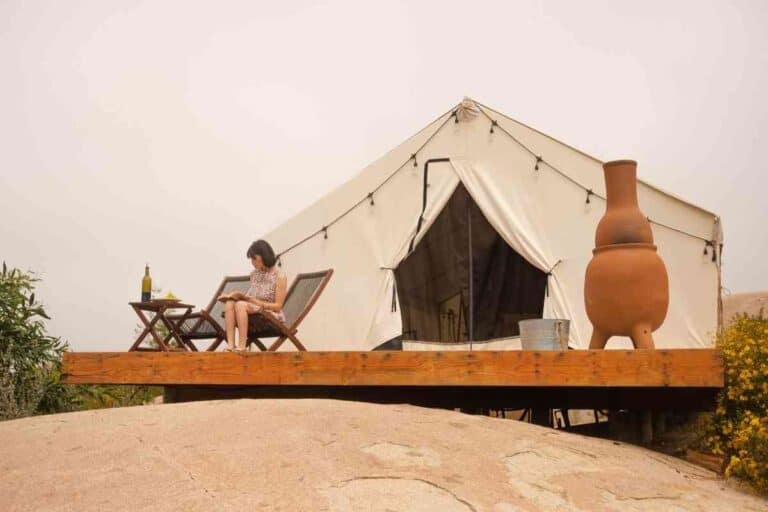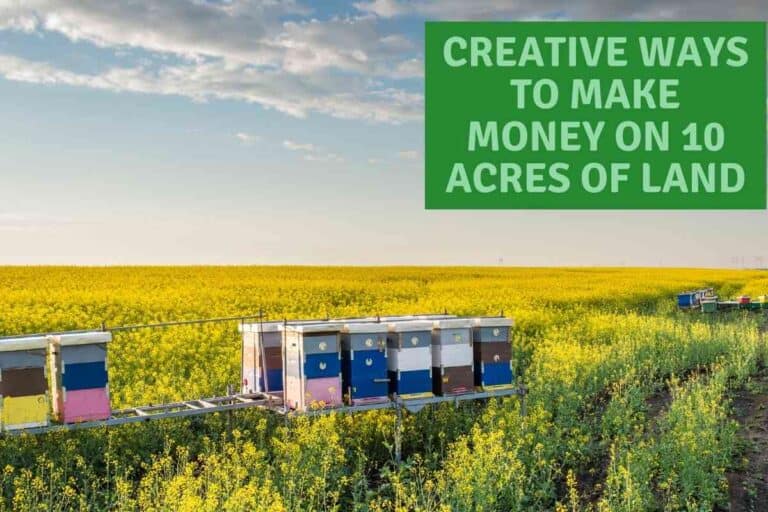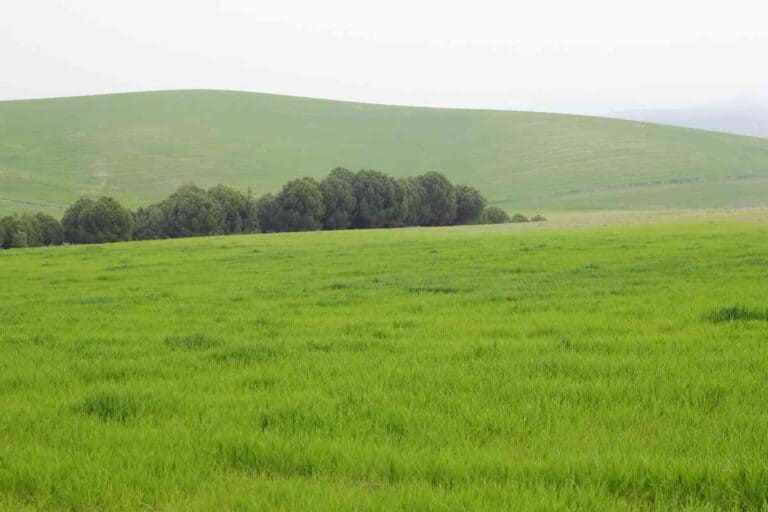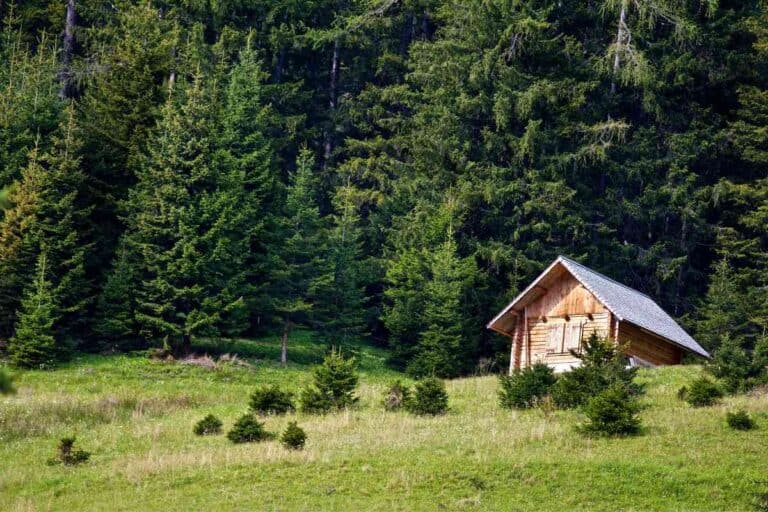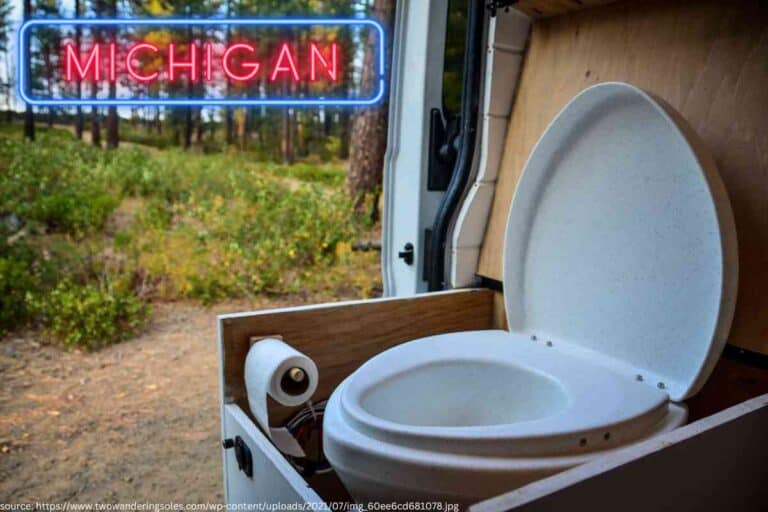The Total Cost of Starting Your Own Homestead (With Examples)
Have you always dreamed of running your own homestead? Do you love the idea of being self-sufficient and living off the land? If so, you are probably wondering how much it would cost to start homesteading.
The truth is that there are many factors that go into determining how much money is needed. In this article, we’ll cover everything from what tools are essential when you start a homestead to a total estimate of starting a homestead. We hope that by the end of this article, you’ll have a better understanding of whether or not making your own homestead is possible for your budget.
The Cost of Homesteading Varies Depending on the Individual’s Needs and Desires
First and foremost, it’s important to note that all homesteads are different. It’s impossible to determine how much it costs to start a self-sufficient life without considering your lifestyle and what you want your homestead to look like in the end.
For example, someone who wants to homestead hundreds of acres with lots of animals and crops will have very different needs than someone who just wants a small farm.
Homesteading can be done for an incredibly low cost, but some of those who homestead want to have a more comfortable life versus living simply. When you set your budget, make sure it is realistic and that you’ll be happy with what you need or desire if the circumstances change – such as economic downturns.
Buying Land
A primary expense when you start a homestead is buying land. Depending on how much property you buy, the price can range from $100 per acre to tens of thousands of dollars per acre with many factors influencing this cost.
For example, if you live in an urban area and decide to purchase local land for your new home or farm, there may be little available, and the price will be much higher. Also, if you plan to buy a place in an area with a lot of demand for property (such as very valuable farmland), it will cost more than land that is very hilly or needs to be cleared.
One major consideration when determining the cost of your home is your state. Land prices can be very low in some states while other places charge a premium price for similar acreage. One example is Wyoming – a very rural state with lots of undeveloped lands and a very low population density. The average price per acre in Wyoming is just $750 compared to $10,000 in high-cost California and $3,160 in the United States as a whole.
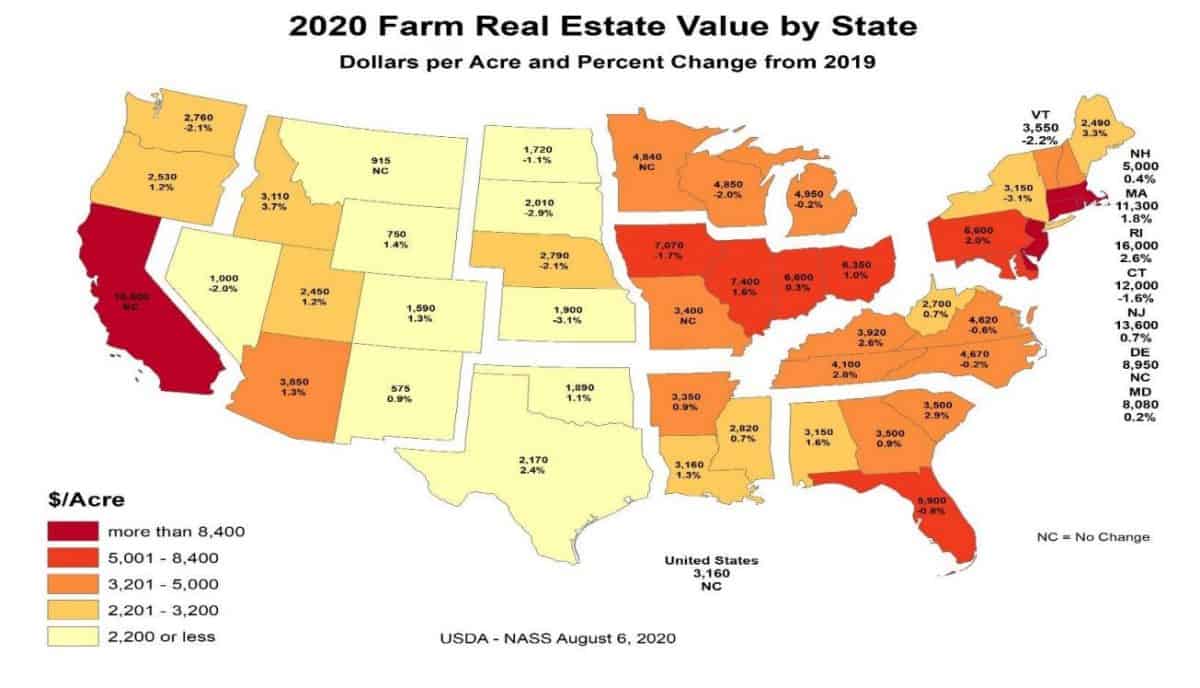
If you are you are up to starting your homesteading lifestyle outside of the United States, you may be able to find land at even lower prices. Countries like Argentina and Chile offer large swaths of land at very low prices.
There are also other ways of getting a place to live. One popular option is to lease the land. You can get some land for a few hundred dollars per year. This is an easy way to get started, but has several drawbacks, mainly that the property is not yours. That means you will be improving on somebody else’s property, you will no be able to hand it down to your children, and you could face eviction when the lease expires.
If you decide to rent the property, consider signing a rent-to-own agreement. This means that you will lease the property with the option of buying it before the lease expires. This way you can start your homestead on a small budget while you save up to buy the land. Rent-to-own is also a great way to ensure that you really want to homestead on this property before you commit your nest egg to the project.
Another way of getting a good place for your homestead is to buy it with a friend or family member, or even a bigger group of people. That could be with the intention to buy a community farm, but it could also be a way to buy a lot of land at a lower price per acre.
So, how much land do you actually need for a homestead?
The answer to this question is different for everyone. But there are some standard guidelines that can help you figure it out.
The general minimum land required for a family of four to become be self-sufficient is about one acre of land. This only includes vegetables and just the most basic variety of food for survival purposes. On the other end of the spectrum, an entirely self-sufficient homesteading family needs about 20 acres to provide a very wide range of meats and vegetables. You can find more information on how much land you need to buy for your homestead in this article.
On top of that, land for firewood, solar panels, and the like will also be necessary. Growing firewood is by far the most space-demanding of these and will depend on how much you need to harvest per season. Assuming you use one cord per month on average, you will need at least 12 acres to keep up with your usage. Here is an article discussing how to estimate the amount of land you may need in order to grow and harvest your own firewood sustainably.
Assuming you need a total of 20 acres for a medium-sized homestead, the purchase price will vary from $18,400 in New Mexico to $320,000 in California. However, the exact price of the land will depend greatly on location and access to water resources. One reason property prices are very low in New Mexico is the desert climate, which makes homesteading more difficult.
When choosing a place to set up your home, price and acreage are important, but other factors are equally crucial for a successful endeavor, including ease of access, water, soil quality, etc. Sometimes it’s cheaper to pay more for a great plot than to develop it yourself.
Building a House and Other Buildings
Another factor significantly impacting your homestead is what kind of house you want to live in.
One option for starting a homestead is to purchase a house in good shape. Another is to build one from scratch, either on your own or with help from professionals. Renovating an old house can be another option, which would generally be cheaper than building a new house.
That being said, a house in good shape in a rural location may have a market value much below the cost of actually building a new home. Meaning you could end up with a property for less than the cost of building it.
Many other considerations factor in when deciding on a property, though. And some are much more important than what house is (or isn’t) on it. If you find the perfect homestead, it may be less important if there is a house and in which condition it is.
However, if you are looking to set up your homestead in a remote off-grid location, there is likely no house on your property, or it is in such a bad shape that renovation is impracticable.
of the house, how many resources are needed for construction, zoning regulations in your area, or restrictions put forth by local homeowners associations. The average price of building a house in the U.S. is $300,000, but that cost can rise to $450,000 for a larger custom home.
Besides housing, you may also need several other buildings:
- A large barn to keep your vehicles and machines dry and protected from the elements. A metal barn costs about $11 to $17 per square foot.
- A greenhouse. Depending on where you live, a greenhouse may be necessary if you want to grow a wide variety of fruits or vegetables. The average cost for a greenhouse is $25 per square foot. Alternatively, you can save a significant amount of money by building a polytunnel out of affordable building materials.
- Septic tank. Unless you are able (and willing) to connect to the public sewer system, you may need a septic tank to handle the greywater and blackwater from your house. Setting up a new septic system will cost around $6,000.
- A water well to supply your family and farm animals with water. The cost of drilling and installing a well varies greatly, from around $1,500 to upwards of $12,000 depending on soil composition, depth, etc.
- Solar panels or wind turbines will also be a significant investment. Unless you can connect to the grid or are willing to rough it out, you should expect to spend between $15,000 and $30,000 on solar or wind power sources. You can read much more on generating power living off-grid here.
Should you buy an existing farm or build from scratch?
Buying an existing farm or smallholding will be much easier than starting from scratch. Not only will it save you the significant task of building a house, but you will also take over existing infrastructure, such as a barn, fencing, driveway, etc. This may save you thousands of dollars and certainly save you a lot of work – not to mention bureaucratic hassle.
Unless you really prefer to have a blank slate and build from scratch, this is the most sensible option for people who are just starting out, if you can afford it.
So how much is an established homestead? The average price of 10 to 30-acre farms and ranches for sale on landwatch.com is $500,000, but if we exclude properties over $1 million, it goes down to $383,000. Undeveloped properties cost on average $137,000, $1M+ not included. That means you would (on average) save $246,000 by developing the property from scratch. You would also have many more options, as there are over fifty times as many undeveloped plots for sale as there are farms.
Is the savings worth it? That’s up to you. Maybe you don’t even want or need a traditional house. You may just pocket most of the savings and make an RV your home, or buy a mobile home, or even set up a yurt.
The Costs of Livestock and Supplies
Homesteading usually includes raising livestock, so let’s talk about how much it would cost to get your livestock and supplies.
Chickens
The price of livestock varies depending on what you want, but you will probably start out with chickens, which are also one of the cheapest farm animals. Assuming you want egg-laying hens and a rooster, you can expect to pay around $200 to $500 for ten chickens depending on the breed.
On top of that, you will need a chicken coop and a run to keep them safe when you are not at home. You can usually find plans online or a how-to book at your local library that will show you how to build one, which could be done for less than $100 in building materials or a high as $1,000. Add to that a hundred bucks or so for a chicken feeder, waterer, feed, and a few odds and ends.
Goats
Goats are another very popular homestead animal. You can buy a couple of goats for around $100 to $400 each, or you can find them through classified ads, breeder lists, and animal rescue organizations.
Goats are escape artists, so you will need to build a sturdy and secure fence. It should be at least five feet high with cattle panels or chainlink fence, preferably electric or barbed. They will also need shelter from the elements, where they can seek cover during extreme weather conditions like storms, snow, and heavy rain.
Goats need about 250 square feet per animal, which means you will need 500 square feet for two goats, although you may want to build a larger enclosure that can accommodate more goats in the future. A 500 square feet chainlink enclosure will cost around $1,000 in materials. Add about $200 for the waterer, feeder, and a few other things, plus $500 to $1,000 for a solid lean-to.
Cattle
Cattle are also very popular among homesteaders. Prices of cattle vary depending on the breed, but a good estimate is $500-$600 per head of cattle. A great small homesteading breed like the Dexter could go as high as $1,000 or more. If we assume the average price of cattle is $600 each, then that’s about $1,800 for one bull and a couple of cows.
Cattle will need a minimum of 350 square feet per animal, which means you will need 1,050 square feet for your little herd of three. If you plan on having them on pasture, they will need several acres of enclosed pasture with a shelter for bad weather.
Luckily, cattle don’t need expensive chain link fencing. Three strands of electric fence or barbed wire will suffice. Expect to pay about $1.50 per foot of fencing or $345 for your 1,050 square feet enclosure. Plus about $1,000 for a solid shelter and $200 for a waterer, feeder, and other necessary supplies.
Let’s summarize the cost of livestock on our little self-sufficient homestead:
| 10 chickens | 2 goats | 3 cows | Total costs | |
|---|---|---|---|---|
| Animals | $350.00 | $600.00 | $1,800.00 | $2,750.00 |
| Shelter and enclosure | $450.00 | $1,750.00 | $1,345.00 | $3,545.00 |
| Miscellenious | $100.00 | $200.00 | $200.00 | $500.00 |
| Total | $900.00 | $2,550.00 | $3,345.00 | $6,795.00 |
In our case, the total cost of buying livestock and building fencing for them is $6,795. This is a significant upfront cost to starting your own homestead.
Acquiring Equipment to Start Your Own Business
Managing a homestead is much more work than growing a little vegetable patch in the backyard. While you probably won’t do large-scale industrial farming, you will need equipment to get the job done, and that is not cheap.
What you will need depends on how big your homestead is and how much of it needs to be worked. Here is a list of tools you will probably need for your homestead:
- Tractor with attachments. Including a front loader and a trailer. Save a lot of money by buying used!
- Knives. You most trusted tool. I recommend one fix-blade knife, a multitool, and some quality butchering knives.
- Axes. At least one good splitting ax and one shopping ax
- Saws. A quality chainsaw, a handsaw, and a sawbuck
- Electric wood splitter. You probably will need some powerful help splitting all that firewood. Luckily, it will pay for itself in no time when the heating bills are eliminated.
- Shovels and Spades. You’ll need at least one each of a spade and shovel
- An auger. If you are going to set many fence posts, consider buying or renting a motorized model.
- Powertools. You will need lots of power tools, from a drill and impact driver to a sander and a welder. You may as well buy a quality kit like this DeWalt combo kit and save some money instead of buying each tool individually.
- Hand tools including hammers, wrenches, pliers, screwdrivers, level, etc.
- Gardening tools. Rake, broom, a hose, watering can, pruner, etc.
- One wheelbarrow. No two: one for you and one for your husband or wife.
- A driving lawnmower.
- Generator. For when there is a power outage, your solar panels or wind turbines are not producing enough to keeping the batteries charged, or when you need power on a remote corner of your land. Remember to store generator fuel.
- Food processing and preserving tools. Including a meat grinder, canning equipment, juice presser, etc.
These are just the fundamental tools that you will need to maintain and develop a homestead. You will probably need more specialized tools as you work on your homestead. Like a welder to do metalworking, a tiller, and perhaps a portable sawmill to cut your own lumber.
Costs associated with getting set up for a homestead are up to you. You can spend as little or as much on your homesteading venture as you wish, but how much you put in may to tome degree dictate how fast and how successful you’ll be at getting it started.
Start small if finances are an issue, but I would recommend against buying the cheapest tools. Especially the tools that you will be using every day. Low-quality tools will break much faster and likely cost you more in the long run – not to mention the frustration of having to fix something or buying a new thing.
To save money on tools, consider buying them used. Most quality farming tools will last forever if they are well-maintained, and you can often get them for a fraction of the cost of buying new ones.
Food Production and Storage
A central part of homesteading is how to produce food and store it. Food production can take many forms, from vegetable gardens gardening and managing fields to processing.
The costs of growing vegetables are relatively low, and the end product is a cost-effective way to feed your family. However, you will still need to buy seeds, seed potatoes, etc. first year. Assuming you will grow one acre of various vegetables, you will likely spend $300-$600 on seeds, depending on what you buy.
Save money in the future by harvesting your own seeds: grow vegetable strains that produce viable seeds and protect them against cross-pollination.
Depending on soil quality, you may also need to get fertilizer from outside sources until you get your own production of manure and compost going. However, this can very often be obtained for free from a local stud farm. You’ll rarely need to buy fertilizer unless you’re growing many acres.
You will also need to irrigate the garden. The cost of water will vary depending on where you live and soil type, but regardless of the location, you will need to set up efficient irrigation systems to be used when the weather gets hot. For a small vegetable patch, a garden hose will suffice, but if you plan on growing more than a quarter acre, you’ll need to invest in sprinklers or a drip irrigation system. Installing a drip irrigation system on one acre will cost about $2,150.
Protecting your crops against pests is also a consideration. If you have a small garden, handpicking or using deterrents such as soapy water will do the trick. However, if you grow enough vegetables to feed a family, you may need to build fencing to keep deer and other mammals out. Some plants (like carrots) should be covered with fleece tunnels to protect them from carrot flies. Keep these potential additional costs in mind when planning your garden.
Fruit trees and berries are also an essential part of being a homestead farmer. And to produce a great variety of food, these will need to be planted. One way to save on this is through local nurseries or buying land with existing fruit trees. Below is a list of trees and berries that will provide you and your family with lots of produce:
- Six redcurrants and blackcurrant
- A 100 square foot raspberry bed
- A 160 square foot strawberry bed
- two pear trees
- two almond trees
- two peaches
- two fig trees
- two cherries
- two blackberry bushes
- two grapevines
- two rhubarb
Finally, you will need to preserve and store your crops. You can preserve food by freezing or drying it, but if you plan on preserving large amounts of produce for the winter, you will need to build a root cellar and/or invest in other storage methods. A 200 square foot concrete root cellar costs about $5,000 to build, provided you do the labor yourself. There you will be able to store lots of food all year round.
For food preservation, you will need basic canning tools and as many jars that you can get your hands on. Canning is a great way to store produce for winter, jams, and many other foods, and you can find plenty of tutorials online on how to do it. Expect the total cost for jars and basic canning tools (things like tongs, canning racks, and a jar lifter) to be around $150.
I also recommend you get a quality vacuum sealing machine for your meats. Anything made by FoodSaver is great. There are cheaper brands, but I have only had terrible experiences with cheap vacuum sealers. The primary difference between the various FoodSafers is that the more expensive models allow you to vacuum reusable sealer bags and containers, plus a few other features.
Transportation
Besides the tractor, your new remote homestead will probably require a four-wheel-drive truck. While you may be able to get away with a smaller car, a more powerful vehicle will be able to do things such as pulling fallen trees and hauling large loads of supplies.
It is not uncommon for people to give up their cars and buy more expensive vehicles when they head out on the country roads. But you don’t have to buy new if you know how to maintain an old truck. Regardless of how you go about solving your transportation needs, you will be wise to cultivate knowledge in basic mechanics – a skill set that will save you lots of money when the tractor needs servicing.
Don’t Forget the Running costs
The total cost of starting a homestead is more than just the initial purchase price of the house, infrastructure, and equipment. Once you have those things all set up, they will need upkeep and maintenance at regular intervals to keep them from becoming rundown or unusable over time.
Animal feed, hay/grain for livestock, bedding, and animal care are the most noticeable expenditures for most new farmers. Other Running costs may include property taxes, insurance premiums, accountant, and property insurance.
We will not go into details about the costs of running a homestead, as this article is about the cost of starting one. Suffice to say, running a homestead costs money. And even though it should be cheaper in the long run (potentially generating a good income), you may need to keep your day job or a financial buffer that can keep you afloat during the first year or two.
How Do People Afford Homesteading?
A few homesteaders start out with hefty bank accounts. They may have had a high-paying career when they decided to quit the rat race and focus on living a simpler life. They may also have gained money from selling their house in an expensive neighborhood and invested it into the homestead.
Many others start a homestead with much lower incomes, but they can still afford their dream. This is because they have found ways to make their money go further in more affordable parts of the country. They may also have been living frugally for years before they bought land – or they started by renting their home until they could afford to buy it.
The best way to afford homesteading is to minimize the costs by starting out small. Get all the land that you will need going forward, but don’t purchase all the livestock and equipment right away. Not only will this significantly minimize your initial expenses, but it will also be a lot easier to manage in the beginning.
Even if you already have a lot of experience, going all-in from day one will burn you out. Instead, start with what you already know or what is generally easier to manage, I.E., getting chickens before goats and goats before cattle.
One of the things that you should consider is how much money you have saved up for your new lifestyle and what debt obligations were accumulated during your job-based lifestyle. You may have to focus on eliminating debt and wasteful spending for a few years in order to afford your new dream.
That doesn’t mean you can’t get your hands dirty. You can start a vegetable garden in your backyard or rent a lot in a community garden. In fact, backyard homesteading is a great way to get a good start. Get a few chickens and maybe some fruit trees, and see how much food you can produce (and how much money you can save) on a small plot.
A Budget Example
Now that we have gone through the costs of starting a homestead, let’s summarize the cost of starting a homestead in this example:
| Cost | |
|---|---|
| Land in Texas (35 acres at $2,170 per acre) | 75,950 |
| Container house (that you build yourself) | 80,000 |
| Barn (1,000 square feet) | 50,000 |
| Septic system | 6,000 |
| Well | 10,000 |
| Solar power system | 15,000 |
| Root cellar | 6,000 |
| Seeds, seed potatoes, etc. | 600 |
| Fruit trees and berries | 900 |
| 10 chickens | |
| Chickens | 350 |
| Coop & run | 450 |
| Misc. | 100 |
| 2 goats | |
| Goats | 600 |
| Fencing | 1,000 |
| Lean-to | 750 |
| Misc. | 200 |
| 3 cattle | |
| Cattle | 1,800 |
| Fencing | 345 |
| Shelter | 1,000 |
| Misc. | 200 |
| Tools including a small used tractor | 21,260 |
| Total | 272,505 |
Remember, your mileage may vary. This is just one example. Perhaps you already own many of the tools needed, or your property already has a well, or you have found ways to keep costs much lower by buying second-hand. There are many ways of keeping expenses down that I didn’t include in this estimate.
On the other hand, there are also many ways to make this a much more costly journey. Especially by spending more on building your home or building it in a particularly expensive location.
The cost of a homesteading dream is as variable as the people who give it life. The example above is just that: an example that may serve as a starting point for your own research.
In this article, we have focused on the initial expenses of becoming a farmer. However, the appeal of becoming a homesteader is often to minimize one’s cost of living. While you may have to spend a lot of cash on tools, animals, etc., you will also save on food costs and make an income selling produce. Besides, you will get in great shape turning the compost pile without having to spend a dime on gym memberships.

